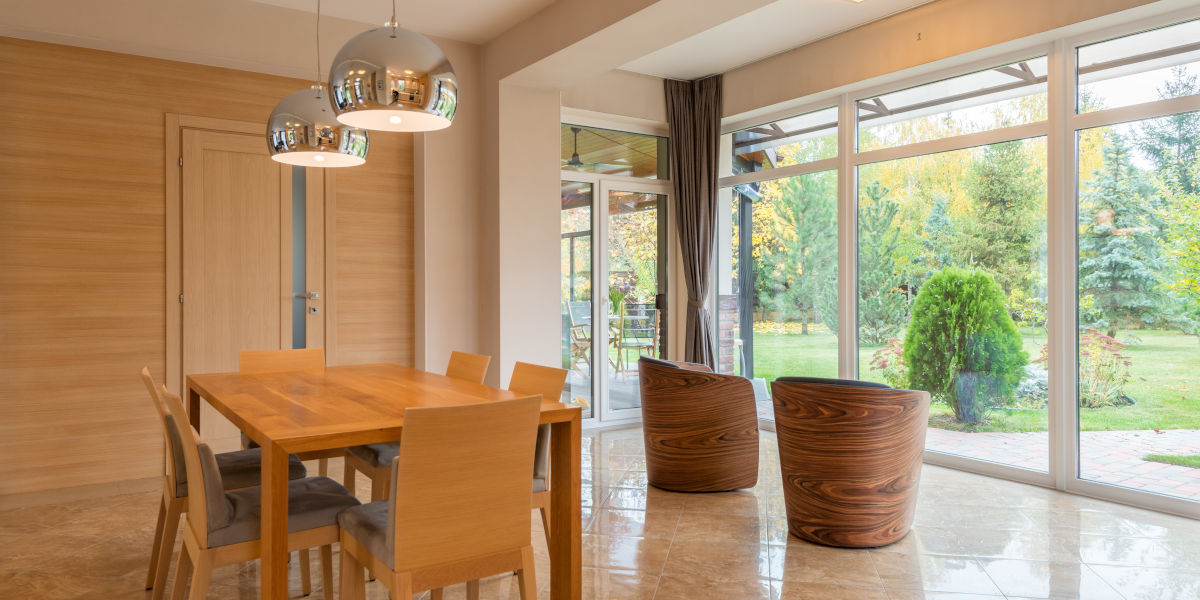If you’re looking to add some new lighting to your home, you’re overwhelmed with options. You wonder which light is the best for your home. You have to think about both functionality and style.
You could never go wrong in choosing a pendant light to put in your home. Pendant lighting has become a standard feature in all modern homes. Pendant lights illuminate an area you choose and provide a distinct atmosphere.
There are many different pendant lights, but not all are equal. Choosing a pendant light can be an enjoyable project, but it can also be a headache.
You need to make sure you get something that functions as required. You also want something that will add some style and elegance.
The right pendant light can transform a room. The light could be a simple, understated accent or dramatic focal point. Pendant lights are a great way to add a unique and personal touch to your home.
You may be looking to light up the entrance hall or create a relaxing atmosphere in your bedroom. The right pendant light can transform your home into a relaxing haven.
Well, worry no more! Here’s our guide to finding the perfect pendant light for your home.
This article will show you what to look for when buying a pendant light.
So, you know the different styles of pendant lights that are perfect for your home. You will know where and how to hang the pendant lights in all the rooms.
What Is A Pendant Light?
A pendant light is an electric light fixture hanging from the ceiling. A pendant light consists of a ceiling rose, suspension cord and a lamp holder.
The lamp holder may have a share or bare bulb. The suspension cord could be a rope, chain, rod or wire.
The pendant light is a good choice for use in the bathroom, kitchen, or other rooms in your home. There are many styles of pendant lights available, and you can choose one that fits your décor best.
How to Choose Pendant Lights for Your Home?
You have many approaches when choosing a pendant light for your home. One promising approach is by following the steps below:
- Define the purpose of the pendant light
- Decide on the design style of your home or the theme of your room
- Choose the design type, shape and size using your design style or theme.
The pendant lights come in various sizes, shapes and designs.
Choosing the right one for you can be a little tricky. You will find a detailed list of all the different types of pendant lights.
So, you will better understand which pendant light is right for you.
What Is The Purpose Of The Pendant Light?
The distinctive design of pendant lights makes them suitable for creating a layered lighting system.
The layered lighting system sets the mood to transform your house into a sanctuary for spending quality time with family and friends.
You can use the pendant lights for many purposes in your home.
Pendant lights add a beautiful, soft glow and create an inviting atmosphere for the room.
You can use the pendant lights as decorative lighting or functional lighting.
Pendant lights have three uses:
- General-purpose lighting of the room
- Task lighting brighten the specific area for safety and clarity.
- Accent lighting to illuminate a particular feature
Pendant Lights for General Lighting
Ensure you look for pendant lights with a diffuser or semi-opaque finishes. So, you can avoid circles of solid light. The idea is to generate a diffused radiance throughout the space. Pendants with cloth shades provide a softer illumination.
You can hang a pendant light as the central fixture in almost any room. Or, you could use one or more pendant lights to illuminate a corridor or hallway.
Pendant Lights for Task Lighting
You can use pendant lights for task lighting. So, you can use pendant lights to illuminate your kitchen bench while you prepare your dinner.
Choose a pendant with an open-top, such as a conventional drum shade, so the light beneath is not harsh.
Translucent-glass shades prevent distracting glare, and opaque shades give off a softer glow.
Pendant Lights for Accent Lighting
You can use pendant lights for accent lighting. Accent lighting illuminates an area for general enjoyment. You can add a dimmer switch to adjust the brightness needed for different times of the day or vary the ambience. The dimmer helps to reduce glare.
The dimmer is also a great way to limit energy consumption and lower your energy bills.
You can also use pendant lights for uplighting your outdoor areas.
The purpose of your fixture also influences the type of bulb you choose.
Keep in mind that the usage of a bulb may improve the appearance of your pendant.
What Are The Materials Should Your pendant Light?
A pendant light can be metal, plastic, glass, fabric, and rattan. The best material for a pendant light is metal because it is solid and durable. Plastic is also a good option because it is lightweight and easy to assemble. Glass is a good choice because it is clear that it creates beautiful effects.
You can shop for your pendant lights according to your preferred material.
The showcase the light in all its beauty, you can use:
- fabric
- metal, e.g. brass, gold and nickel
You can go for wicker/rattan, wood and glass for a subtle mood.
Also, your choice of home design style will determine that material. For the relaxed Hamptons home style, you can look for linen or rattan shades for your pendant lights.
Pendant lights can use different bulbs, e.g. incandescent, halogen, and fluorescent lights. But, LED bulbs are more common now. LED bulbs shine with brilliant and dispersed light. LED bulbs use less energy than conventional forms of lighting. Though, LED bulbs still offer a wide range of colours and designs.
Types Of Pendant Lights
A pendant light can add a beautiful accent to your ceiling, walls and floors. They are easy to install and make an elegant design statement. There are many types of pendant lights available in the market.
- Multi-light pendants
- Globe Pendant Lights
- Cord Pendant Lights
- Linear Pendant Lights
- Shade Pendant Lights
- Lantern Pendant Lights
Multi-light pendants
There are two types of multi-light pendant lights:
- multiple arms with light sources that extend from a central core
- multiple pendant suspension cords attaching to a ceiling rose
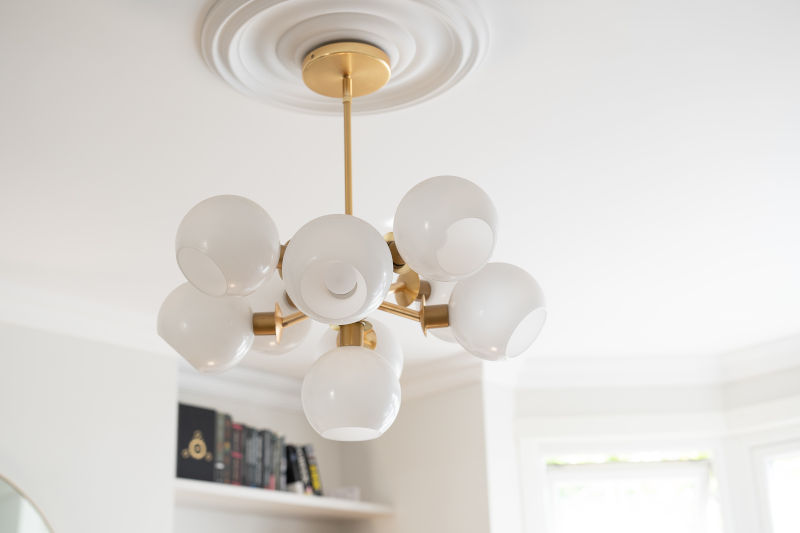
The multi-light pendant lights come with or without shades. Generally, you can find the pendant lights come in three, five or nine light drops.
Globe Pendant Light
Globe Pendant lights feature classic spherical round shades attached to a light fixture.
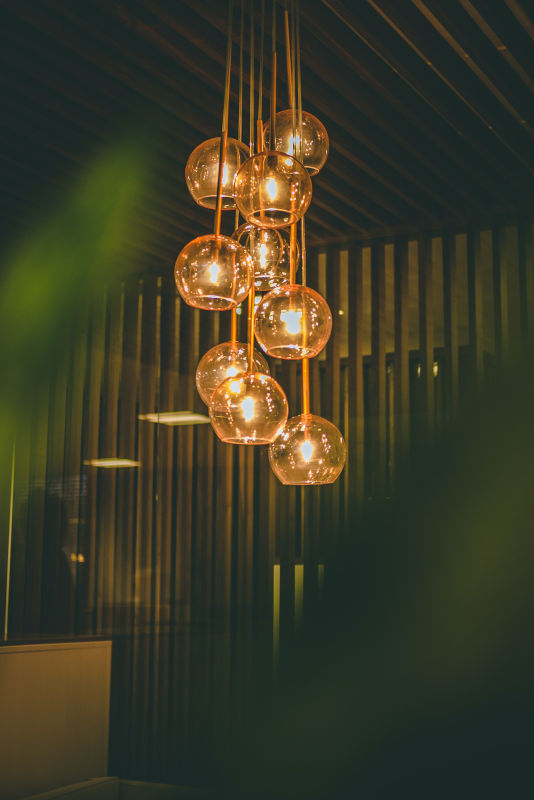
They are ideal for dispersing the light throughout a room. The globe pendant lights are excellent to establish a traditional lighting aesthetic.
Cord Pendant Light
Cord Pendant lights combine a ceiling rose, suspension cord and a bare light bulb. They are great for showing designer bulbs in a single or clustered shape.

Often, the bulbs are incandescent that produce a soft and warm glow. The Incandescent pendant lights are best at creating an industrial or rustic vibe.
Linear Pendant Light
Linear Pendant lights are long tubes with multiple bulbs.
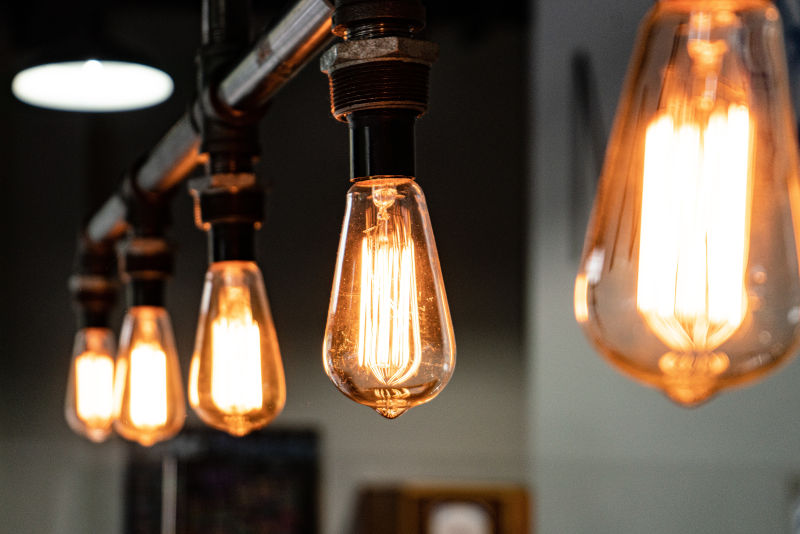
You find linear pendant lights suspended:
- above kitchen island benches
- restaurant kitchens
- bars
A modern take on the linear pendant light uses a long LED strip.
An aluminium profile encases the LED strip, which hangs from the ceiling via think steel rods. The LED strip gives off a super practical light output and offers a high-end designer look.
Shade Pendant Light
Shade Pendant lights are pendant light fixtures with a shade. The shades come in endless variations of material, shapes and sizes. The shade’s material could be copper, brass, wicker, wood, glass and porcelain.
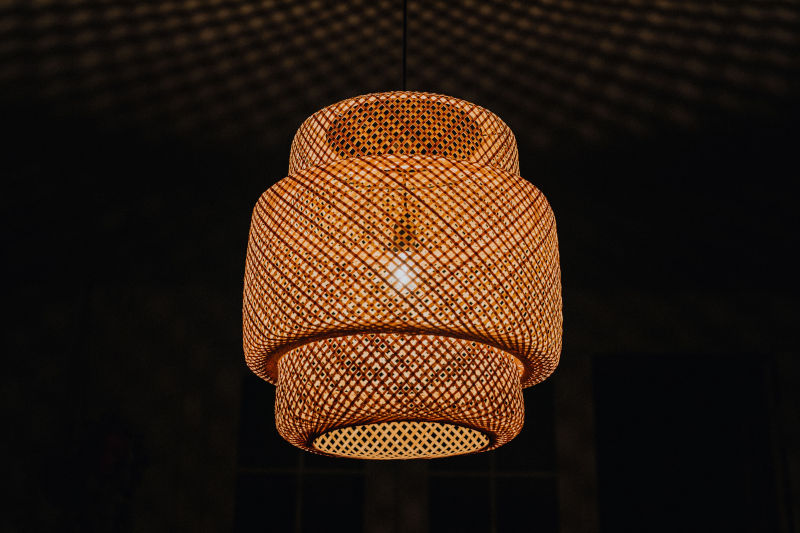
- Glass shade comes in various forms, e.g. clear or opal finished with ripple or crosshatch designs. Hand or mouth-blown glass pendants were standard in the past. But, current manufacturers use machine moulded pendants.
- Drum shaped shades offer a natural soft diffusing touch to a space.
- Parabolic pendant lights use a parabola to reflect light down to the surface of a table. The diffusing light is soft, making it perfect for use as task lighting. Parabolic pendant lights are traditional lighting found in dining rooms and living rooms. It is an excellent addition to any room because it creates a soft, ambient glow.
- A bell pendant light has a decorative bell shape generally used as an accent or feature on the ceiling.
- A dome pendant light is a pendant with a dome shape. The dome pendant lights give the room a more modern and clean look. The dome shape of these lights makes them great for smaller rooms. They can fit in spaces where other pendant lights cannot. You can hang these lights above a table. They are also great for adding style to dining rooms and living rooms.
Lantern Pendant Light
Lantern Pendant lights are perfect for a country or vintage look. You can use lantern pendant lights in any room as a great statement piece.

Lantern Pendant Lights In The Hallway – Photo by Maria Orlova from Pexels
A lantern is an excellent option if you’re looking for a natural, rustic look for your home. Generally, these lights come in a rectangular shape with an encased lamp holder.
What Pendant Light Size Should You Choose?
Ensure the pendant lights match the room’s size, scale, and decors for the best result.
So, a large dining room may accommodate an oversized pendant light. A compact bathroom needs a smaller-scale pendant light in keeping with its size.
A larger one is preferable to make a strong visual statement with pendant lights.
Choose the Perfect Pendant Lighting For Your Home Style
Pendant lights add to the beauty of your home’s decor and provide lighting. You should choose pendant lights in styles that complement the style of your home.
Coastal Pendant Lights
Coastal pendant lights are clean and airy, with clean, soft tones.
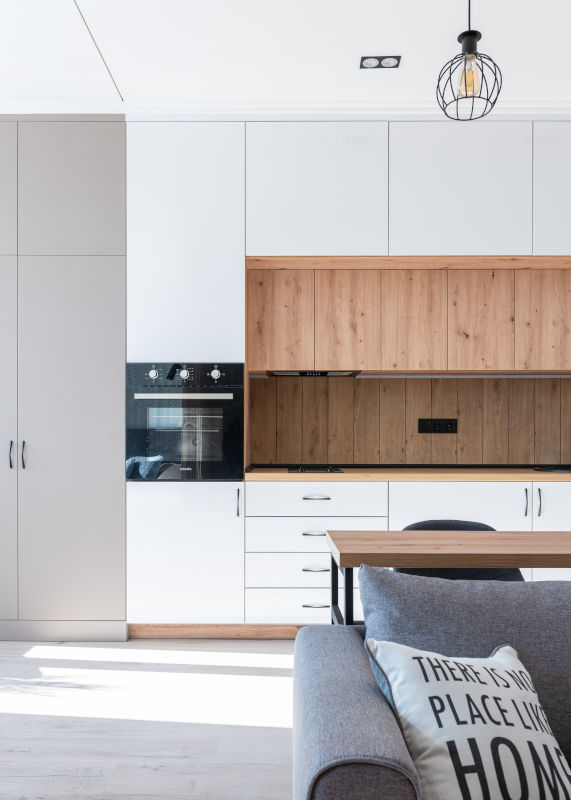
Coastal Design Pendant Light – Photo by Max Vakhtbovych from Pexels
These pendant lights hang from the ceiling with a chain. Choose from a wide selection of coastal pendant styles and sizes to create a unique look for your home.
Contemporary Pendant Lights
Contemporary pendant lights offer soft, clean, and curving lines. They include various late-twentieth-century design features. They’re classy but understated, and they go with a wide range of decor types.
Craftsman Pendant Lights
Craftsman pendant lights are famous for their exquisite simplicity. That transcends fads and homey warmth.
Metal, dark wood, and glass are the primary material in this design.
The dominating colours are brown and amber.
Farmhouse Pendant Lights
Farmhouse Pendant lights are comfy with sophistication; on-trend and traditional; contemporary and relaxed.
Consider a simple candelabra surrounded by worn wood and rustic metal finishes or iron frames balanced with linen fabric shades.
Glam Pendant Lights
Glam up your look with glam-style pendant lights.
A glitzy pendant light makes a statement in a guest or hall bathroom—and is sure to create a conversation.
Traditional Pendant Lights
Warm, rich hues dominate this traditional and beautiful lighting design.
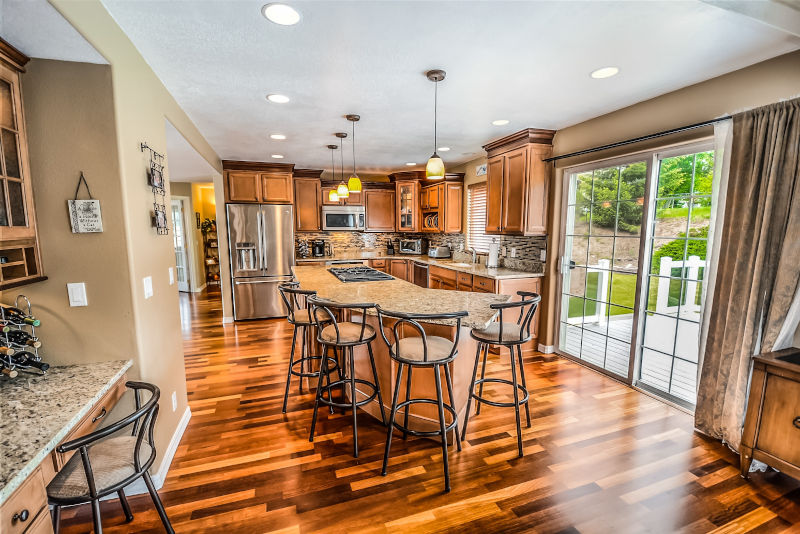
Transitional Pendant Lights
Transitional pendant lights combine characteristics of both modern and traditional designs.
Look for brushed chrome and frosted glass globes with classic forms and modern materials.
Rustic Pendant Lights
Rustic pendant lights are unpretentious and direct, adding an earthy and friendly look to your bathroom.
Pendants made of aged wood and metal in light brown and cream tones are popular.
Industrial Pendant Lights
Industrial Pendant lights are simple, calm and authentic. They are full of unusual and surprising features. Industrial Pendant lights combine manufacturing vintage components, such as:
- rusty metals
- black finishes
- riveted accents
Where Can You Install Pendant Lights?
You can use pendant lights in any room of the house. Make sure the ceiling is high enough and can support the weight of the pendant lights.
It is straightforward to install pendant lights over a kitchen island or a dining area in a family room. Pendant lights are trendy in kitchens because they offer a soft, ambient glow to your kitchen.
Also, you can hang pendant lights in living rooms, in undercover patio areas or even in the bathroom.
Place your pendant lights above beautiful decor pieces for decorative lighting, such as
- A stunning painting
- A one-of-a-kind sculpture
- Crafted piece of furniture.
How Do You Position Your Pendant Lights Within A Room?
Choosing the right pendant lights for your home is an easy task. Next is deciding where and how high to hang your pendant lights. If you suspend the pendant lights too high or too low, they look completely out of place.
When positioning pendant lights, you can use them as a highlight or camouflage the decor of a space. If you opt to stress the scenery, choose light fixtures similar in colour to the rest of the room.
The best way to position pendant lights within a room is to hang them:
- above the centre of a room
- on opposite sides of a space
- over a focal point
Try positioning pendant lights over a table or at the end of a long wall. So, the lights are the most effective when seen from across a large room.
What Height Should You Hang Your Pendant Lights?
It’s vital to place your new light fixture at the proper height. So, you get the perfect amount of light in a given space while still achieving a great appearance,
The height of your pendant light will depend on:
- The look you’re going for
- The location you want to place the pendant light in the room
Use Balloons To Help You Visualise Your Pendant Light
Of course, you could use the traditional way to hang your pendant lights. You will need someone to hold and adjust the pendant light. You stand back to give instructions until you are happy. Make sure you are both in a mood before you attempt this. We don’t want any domestic heat-up debates.
Of course, the easier and faster way is to get yourself some balloons.
You can use balloons of different sizes and shapes to help you visualise. You will know how the pendant light will look compared with home decor.
Tie your balloons with thread and string, then suspend them from the ceiling.
You can test to make sure you can move around without hitting the balloons on the head.
Hanging Your Pendant Light In The Hallway or Entries
The pendant light should be clear from any obstacles that may cause blockages in the hallway, such as:
- doors
- furniture openings
- head height
Make sure to follow the rules below:
- At least 2.1m should be available from the bottom of the pendant and the floor.
- Ensure about 120cm clearance between the light fixture and any surrounding wall/obstacle.
- Add between 6-7cm of height for every 30cm of the ceiling above 2.4m.
You can have a solitary pendant light immediately inside the entrance to greet your guests with a warm welcome.
The warm glow announces that you are finally home. Your guests also feel the friendly welcome atmosphere as they walk into the hallway. Hang a row of the same style pendant lights along a long corridor for a unified look.
Hanging Your Pendant Light Above The Living Room Floor
A pendant light will add an extra charm to your living room. Ensure you pick the pendant light with the same interior theme as your other furniture items. So, your pendant light connects all visual linkages rather than distracting them.
The general rule is your pendant should hang 30cm to 50cm below the standard 2.4m ceiling in Australia. If the ceiling is higher, add 7cm to 8cm for every 30cm.
Hanging Your Pendant Light Above The Dining Table
Install a pendant light immediately over the table to create a cosy ambience. The ambient light warms the room and encourages the desire to bond and eat.
Your pendant light hanging 70cm to 90cm above the tabletop will look great. The pendant light should not obscure views across the table at this height. Make sure that no one can bump into the light.
Make sure you position the pendant lights between 20cm to 30cm from the table’s edges. So, you can see the food in front of you while not casting any shadow.
Hanging Your Pendant Light Above The Bed And Side Tables
Set your pendant light on your preferred side of the bed and read your nighttime novels with ambient lighting before going to bed. Install dimmers and an automated switch in your lighting, so you don’t have to get out of bed to turn it off.
Your pendant light best hang between 35cm to 50cm above the bedside table.
If you like to position your pendant light above the bed, then hang your pendant light at least 2.1m above the floor. So, you don’t bump your head when making your bed.
Hanging Your Pendant Light Above Your Kitchen Island Bench
Add a bit of fun and enjoyment to your kitchen by placing pendant lights over the kitchen island or table. These add luxury to your open-plan kitchen while creating a distinct zone, helpful in large spaces.
If you hang the pendant light too low, you risk creating an overpowering and cluttered area that isn’t welcoming to guests.
If you hang your pendant light too high, the lights will be disproportionate to the kitchen island.
So, you can hang your pendant light between 70cm to 80cm above the island bench. At this height, the pendant light will not be in your way when you prepare your meal.
You can adjust for higher ceiling and pendant light types.
Make sure you pay attention to the people in the room so no one gets glared in their eyes or runs the risk of hitting their head on the pendant light.
Hanging Your Pendant Light In Your Bathroom
Few people ever thought about hanging pendant lights in the bathroom. Pendant lights give a lot of elegance and brightness while taking up very little space in the bathroom.
It’s usually a good idea to consider layers when creating functional and appealing light in your bathroom. This lighting plan blends ambient, task, and accent lighting for activities and aesthetics.
When it comes to pendant light height, bear the following in mind:
- The bottom of the pendant should hang over the top of the mirror above the vanities.
- You can suspend the pendant lights to the lower vanity mirror above the head.
- If your ceilings are low, avoid placing pendant lighting in a high-traffic area, e.g. close to the entryway or above the path to the sink or toilet.
- Hang the pendant from the central beam for balanced lighting in bathrooms with high ceilings. The bottom of the pendant light should be at least eight feet above the tub’s wall for safety reasons.
- Ensure you place the pendant several feet away from the tub’s water supply.
Hanging Your Pendant Light Above Staircase
Like hanging your pendant light in the hallway, you need to keep at least 2.1m clearance. So, your tall guests don’t need to duck when using your staircase.
Space in-between
As a general rule, when using many pendant lights, you can spread the lights apart with even spacing of 50cm-80cm between them.
Yet, this rule is adaptable if you want to make a cluster, a unique statement, or have limited spacing.
How far should a pendant light hang over a sink?
You can hang pendant lights over sinks for a variety of purposes. Pendants that hang over a sink are a great way to add a decorative touch to your kitchen. A pendant light should be at least 50cm from the countertop to avoid hitting people when washing their hands.
How To Hang Your Pendant Light?
The most common way to hang a pendant light is by attaching a chain to the ceiling and attaching the fixture to the chain. The pendant light attaches to the chain. If the pendant light is not securely connected, it may damage the ceiling or other objects below it.
Australia has laws and regulations against unlicensed electrical work. You can get into trouble without an electrician license if you handle live electrical wires.
So, we recommend you get help from a qualified electrician to install your pendant lights.
How many pendant lights should you install?
The number of pendant lights you choose will impact your room’s looks and feels.
Installing too many pendant lights in space will provide harsh bright light. Making the area appear smaller, creating a hostile and unwelcome vibe.
You can always use the “rule of three” to help decide.

The “rule of three” says that things arranged in odd numbers are more appealing, memorable and effective.
So, you can see that many of the pictures in magazines usually show three pendant lights.
If three pendant lights are not enough to light up the area, add more lights. Try to stick to odd numbers, e.g. five, seven or nine pendant lights.
Can You Install Pendant Lights Without Hard Wiring?
You can install pendant lights without hard wiring them into the wall. So, you don’t have to waste time and money getting an electrician. Thus, you can get the pendant lights ready quicker to enjoy the beautiful light in your room.
You do not have to worry about seeking permission to change the dwelling if you rent.
As long as you have a wall plug nearby, you can install most pendant lights without drilling holes in the wall. You could hide the electrical cable with wire conduits.
Running electric cables along the wall is a great way to get the raw industrial look you may want for your home.
But, if you want a more elegant style, such as a modern or contemporary home, it is better to hide the cables. Thus, you need to call an electrician to hardwire your pendant lights.
How Do You Clean Or Take Care Of Your Pendant Light?
It’s easy to clean your pendant light. Generally, you dust your pendant light with a feather duster or a damp cloth.
When you clean your pendant light, you want to clean it so that no dust or dirt remains. The best way to clean your pendant lights is by using a vacuum cleaner or a duster. You can use a microfiber cloth to clean the pendant light as well.
For a more thorough clean, you may need extra items depending on the materials of your pendant light:
- You can use everyday glass cleaners from the supermarket for glass shades or globes.
- For pure metals, such as copper and brass, make sure you use the cleaning solution for the specific metal. You can use a gentle homemade solution of lemon, salt and water.
- For the fabric section of your pendant light, we recommend only spot as required with mild soap and a sponge.
